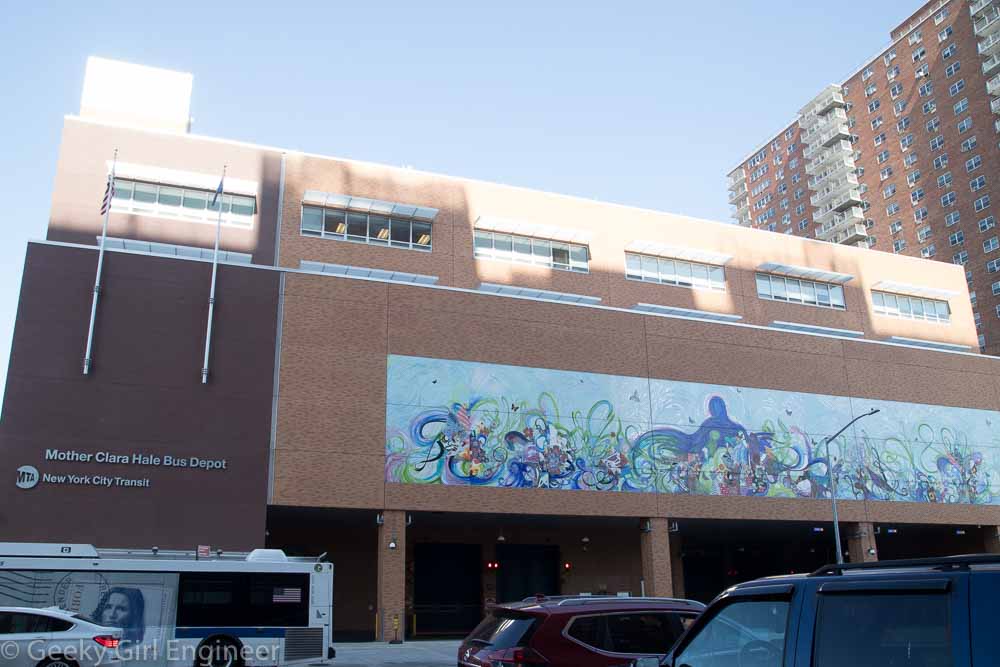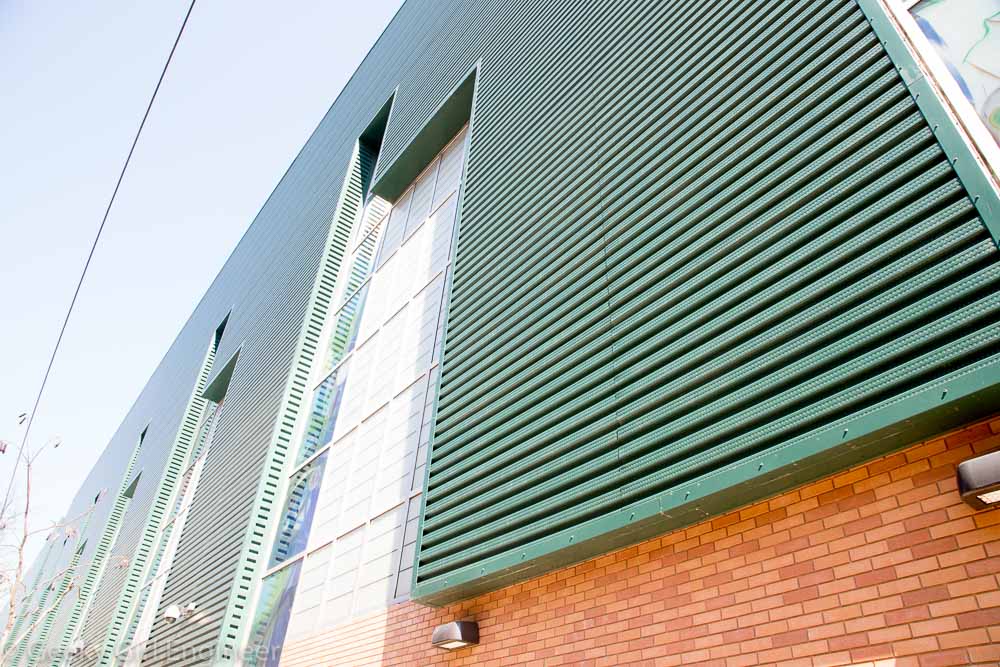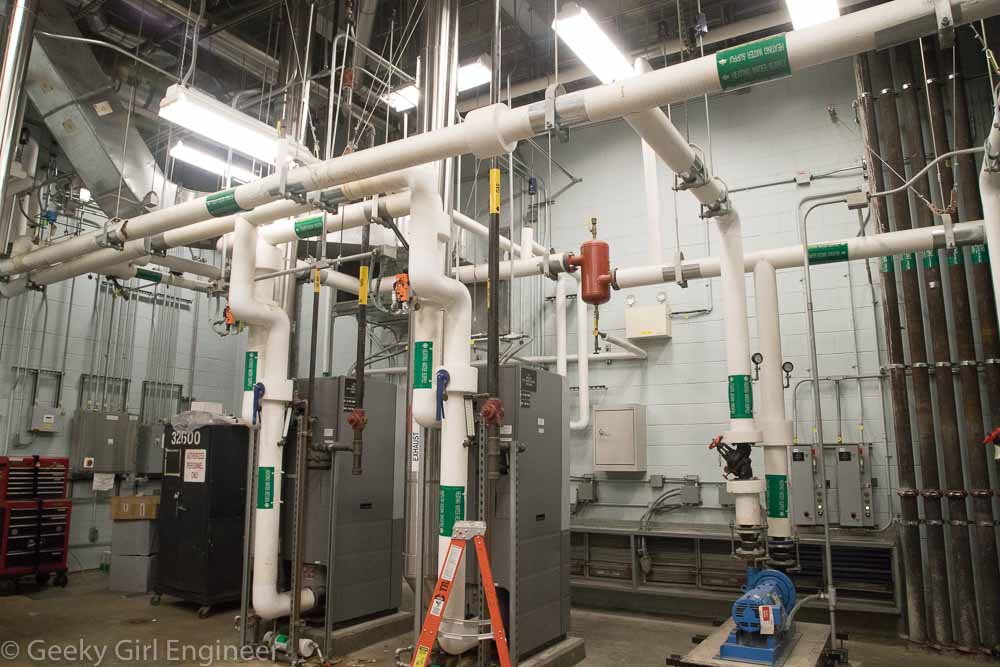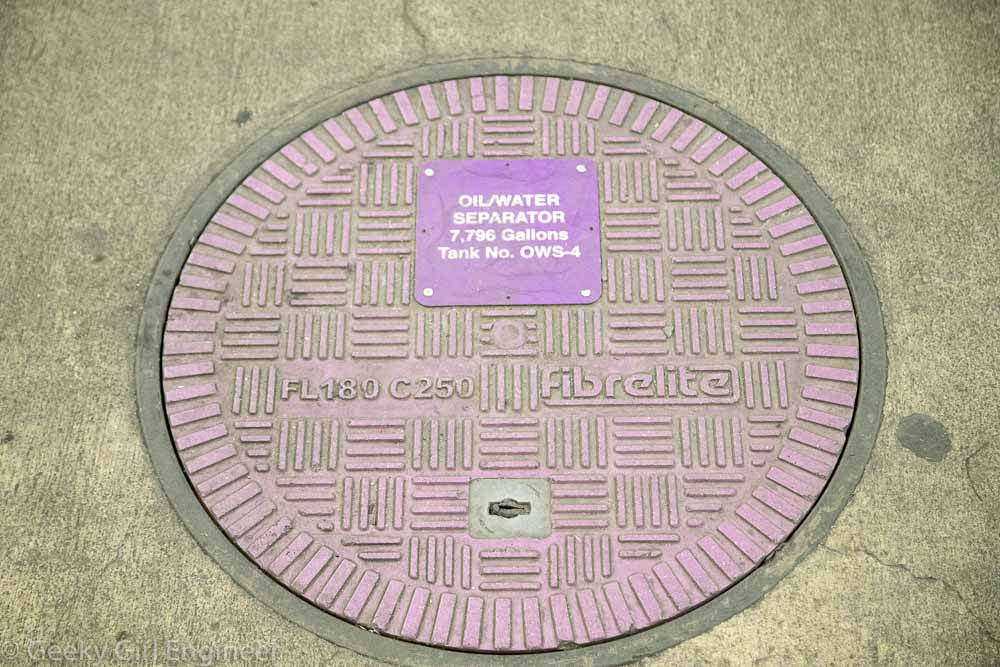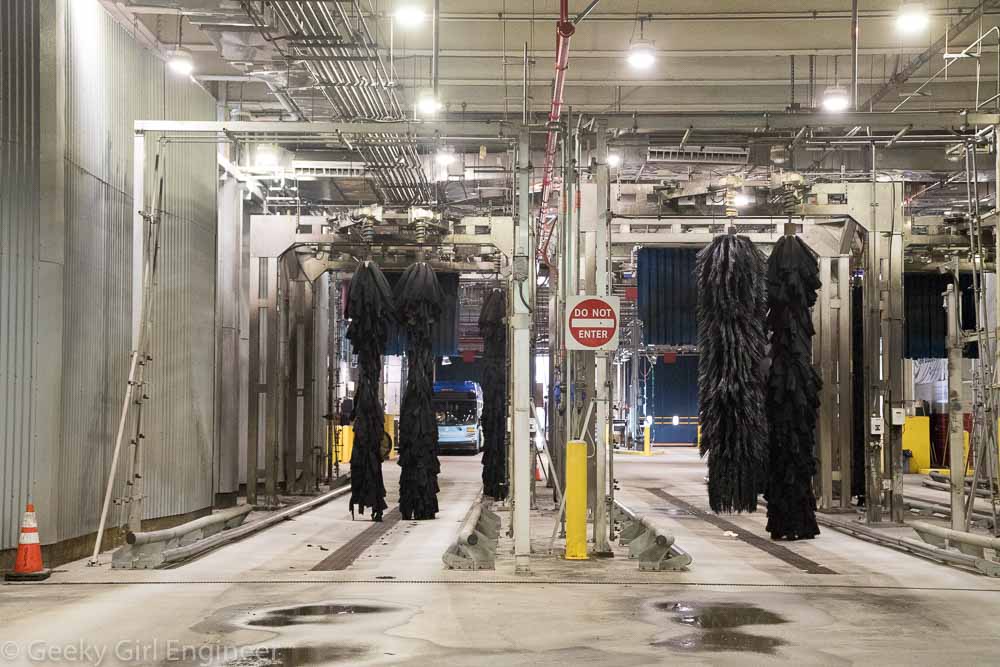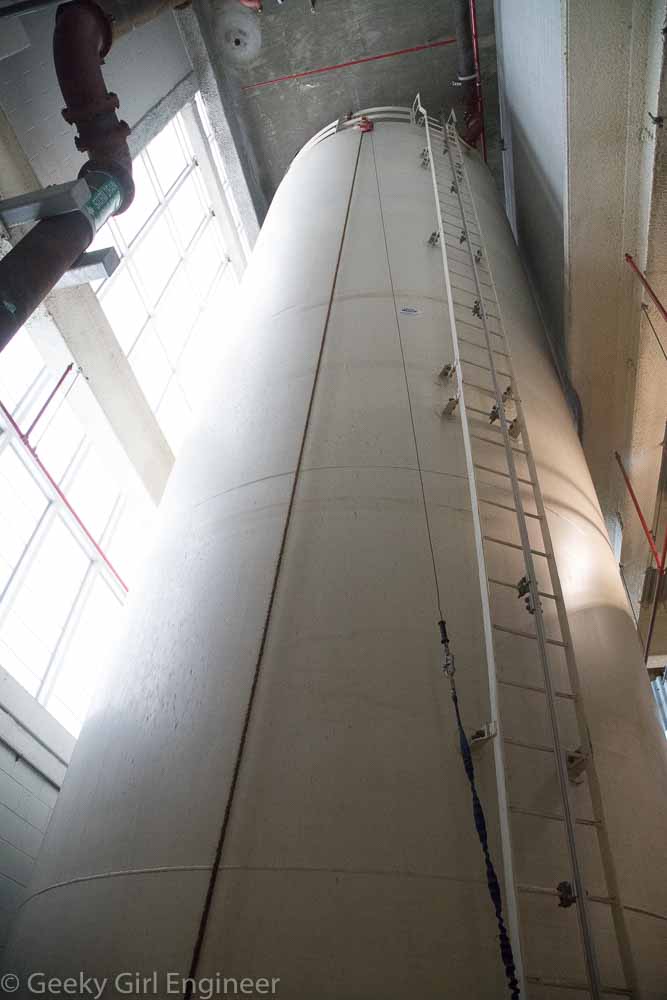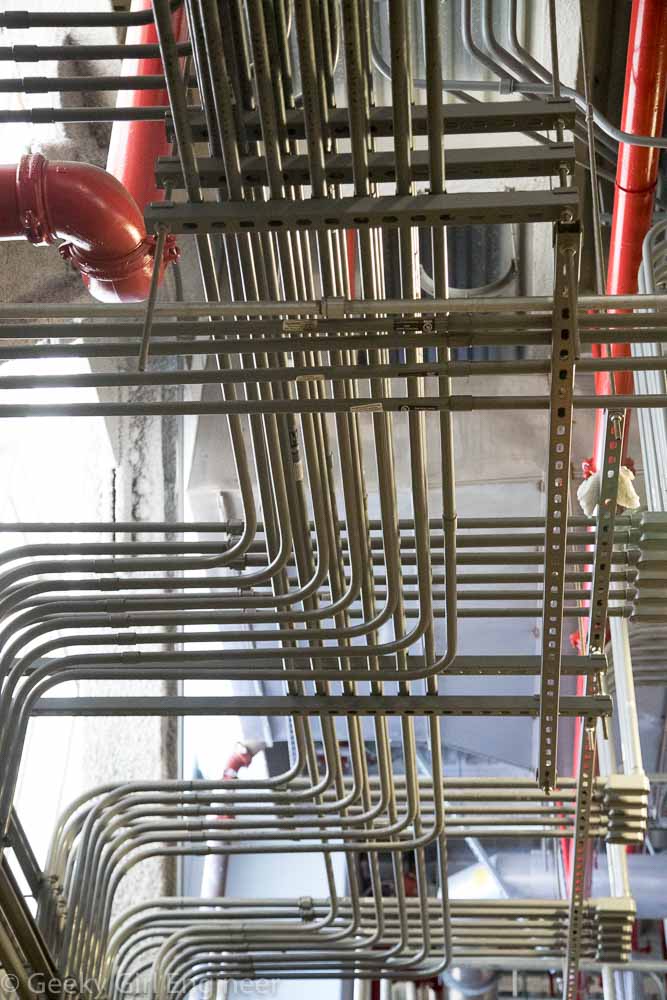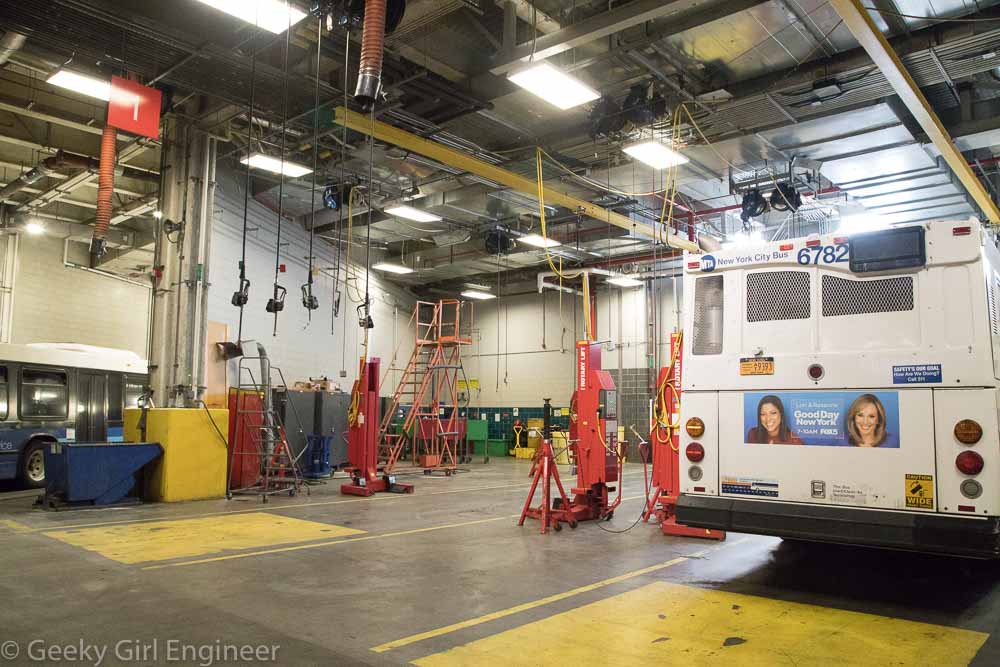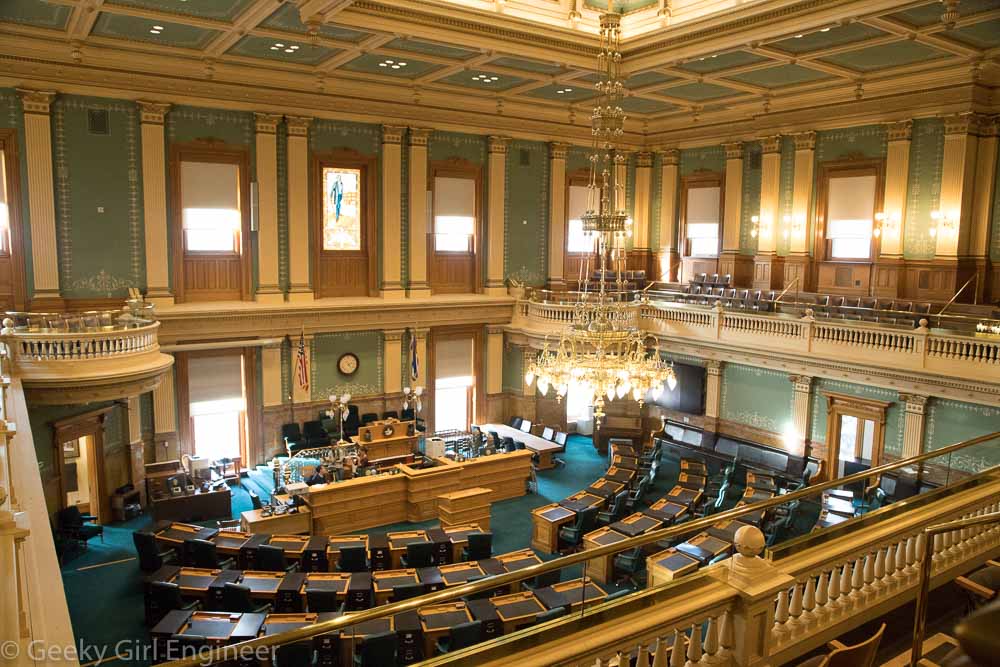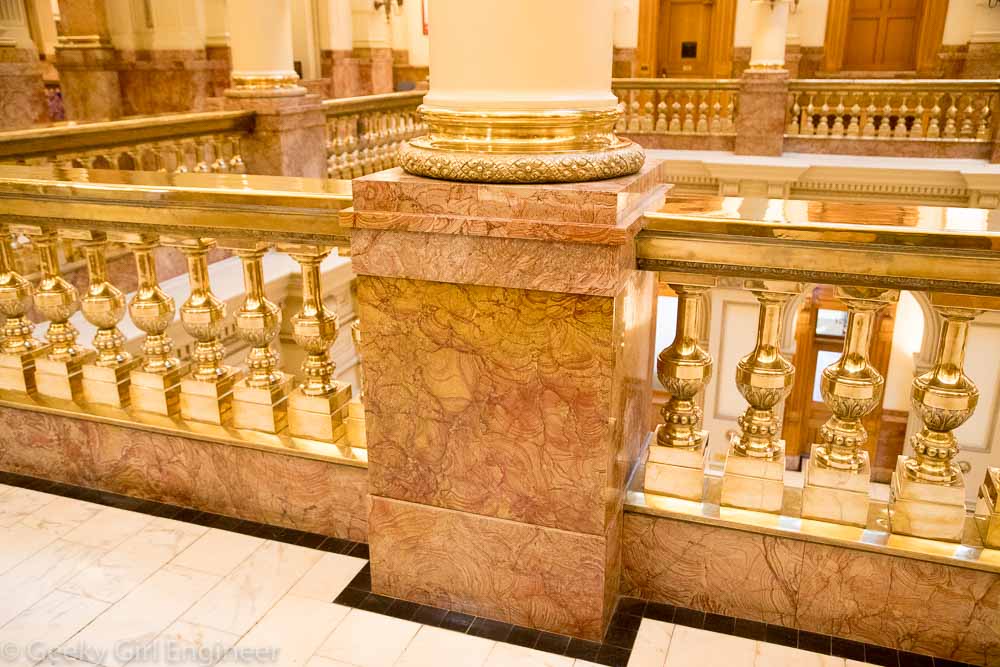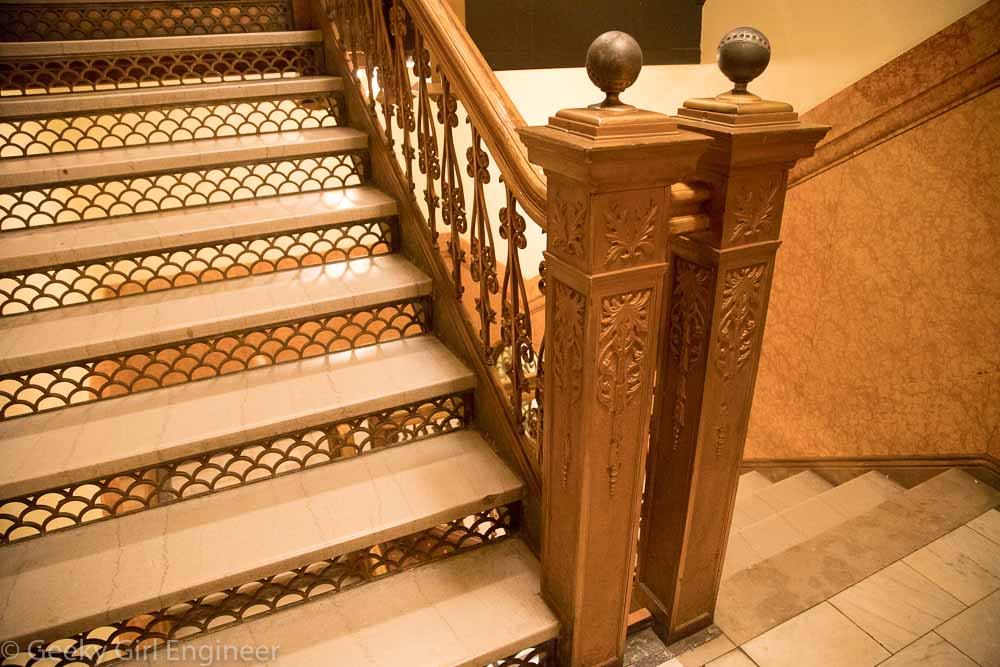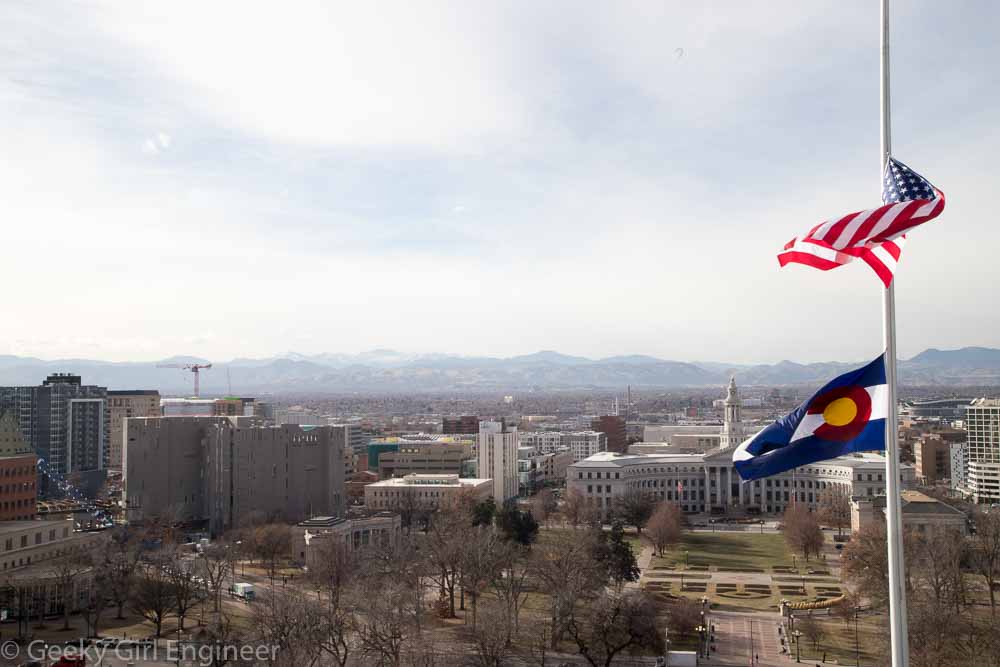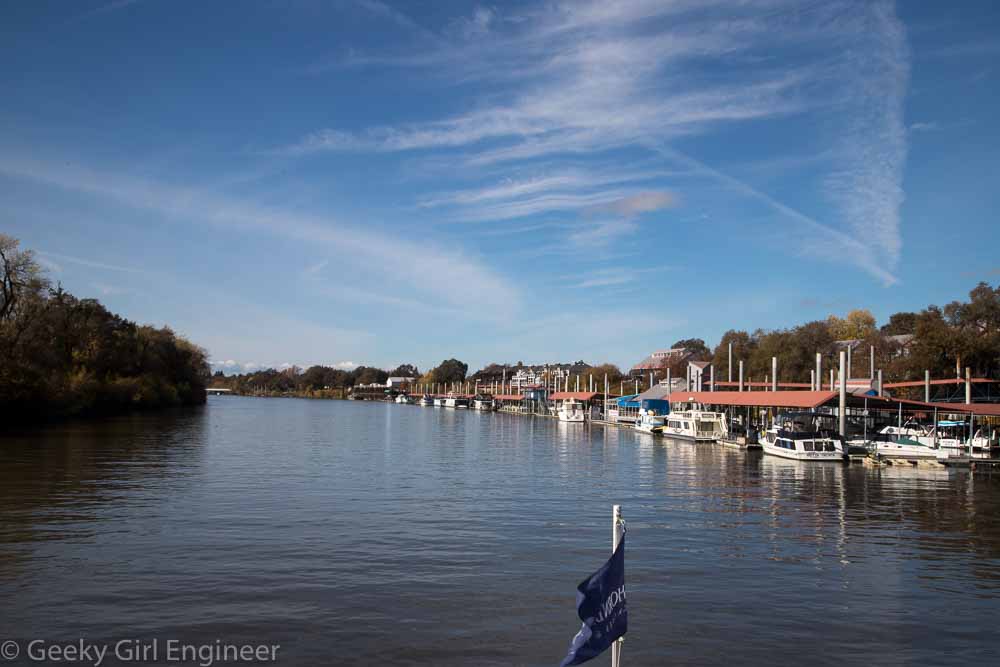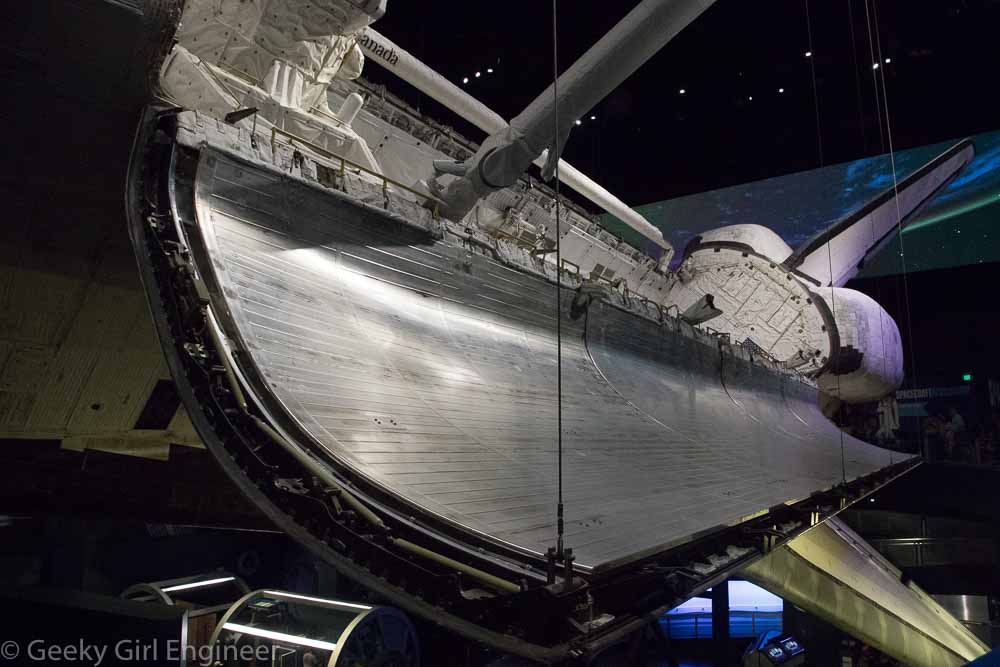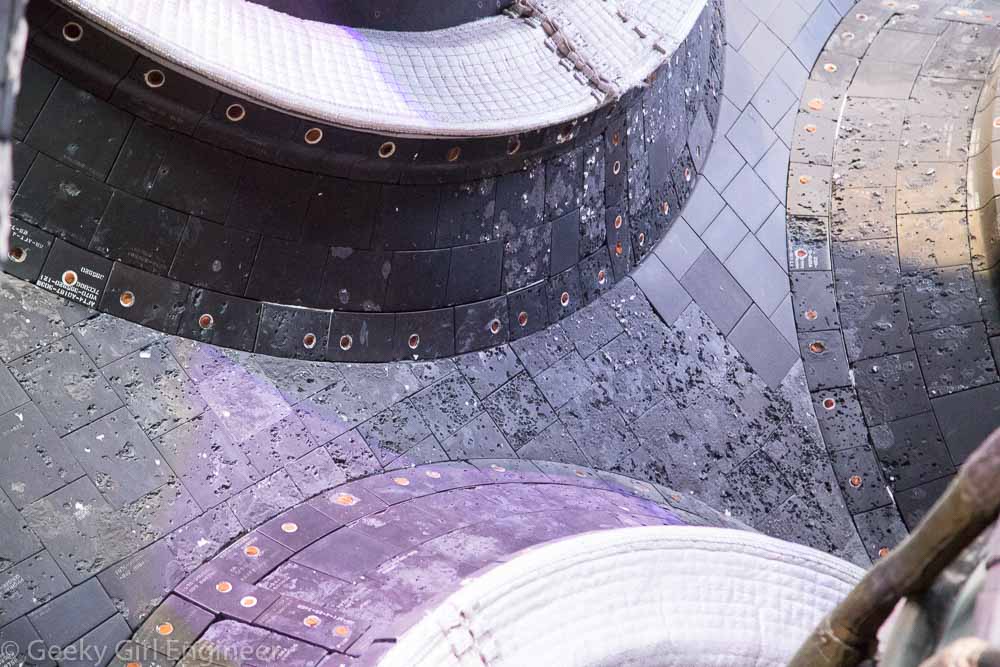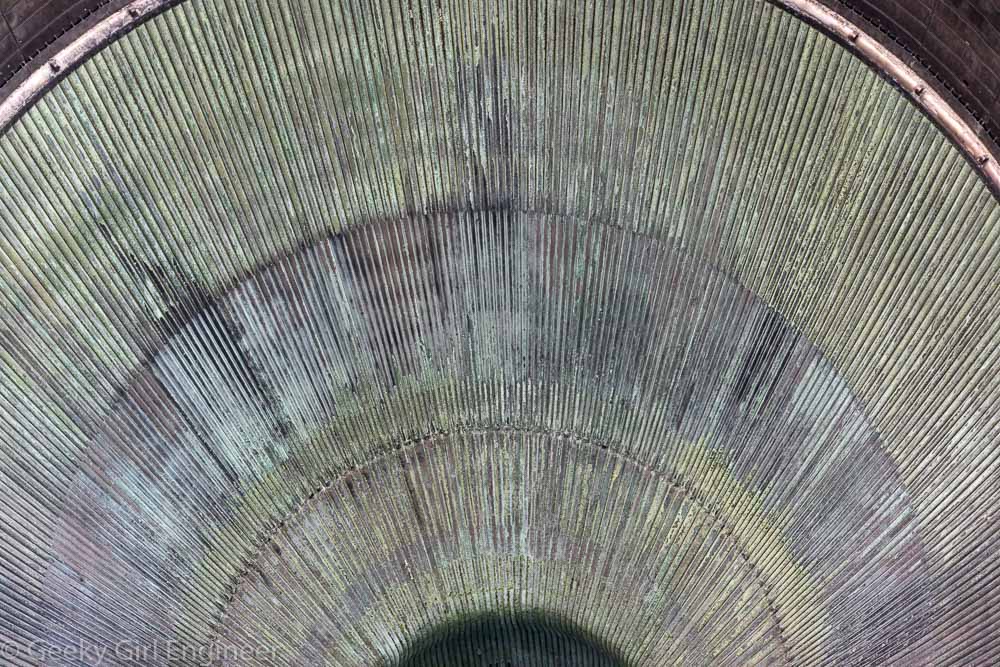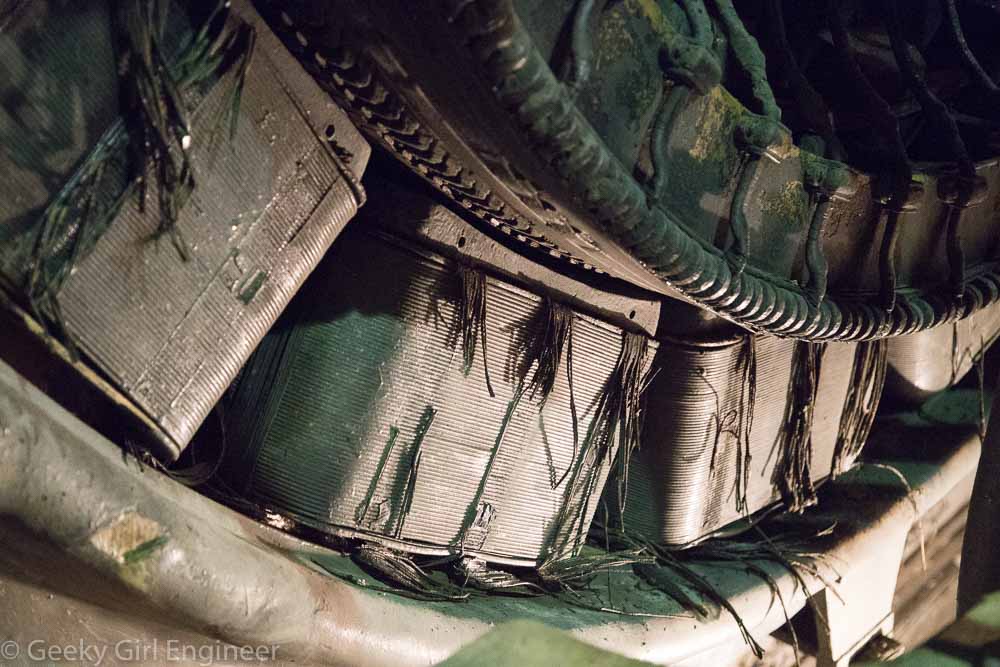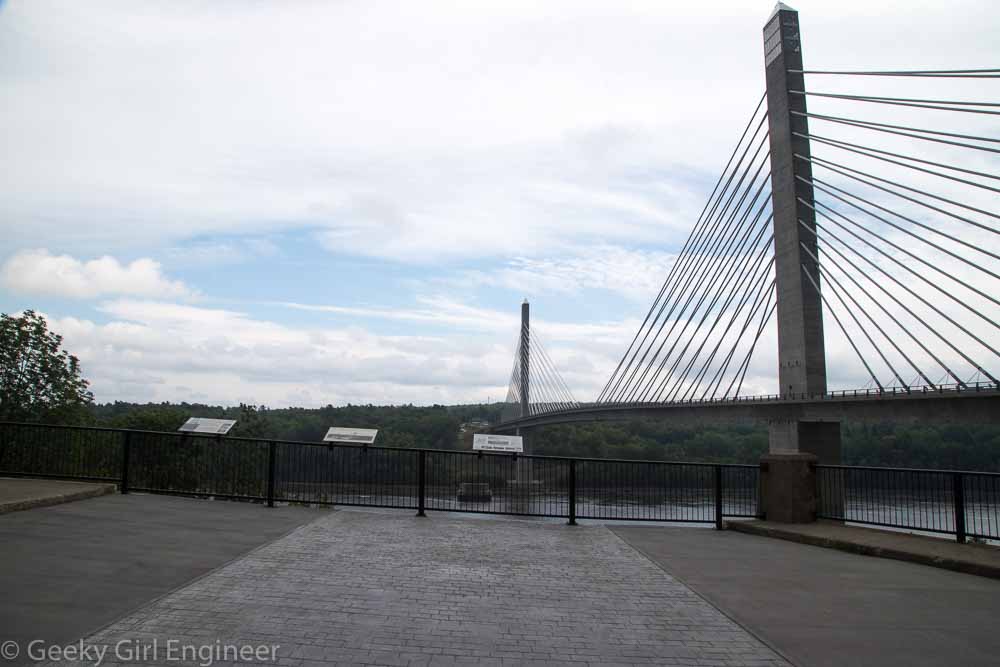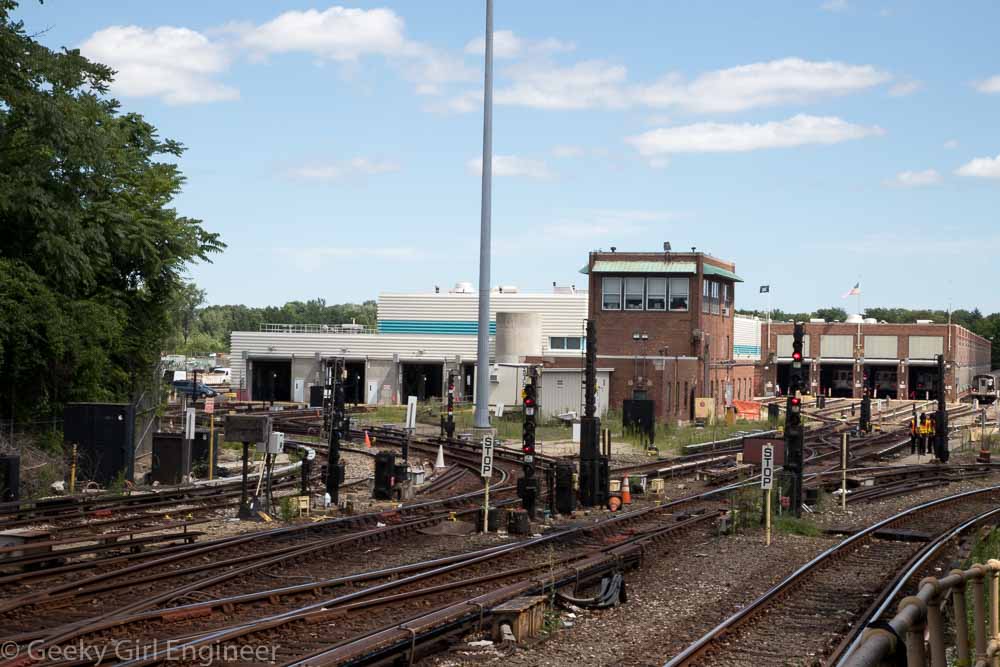I recently got the opportunity to tour New York’s MTA’s Mother Clara Hale Bus Depot with the New York Transit Museum. It is the newest bus depot in New York, and it features many innovative and environmentally friendly design. It has a green roof. Stormwater from the roof in reused in the facility for bus wash. It has a thermal wall that absorbs heat in the winter. It is a really well designed facility, and it is huge. There are also many buses at the bus depot because of course the bus depot is for maintenance and repairs.
